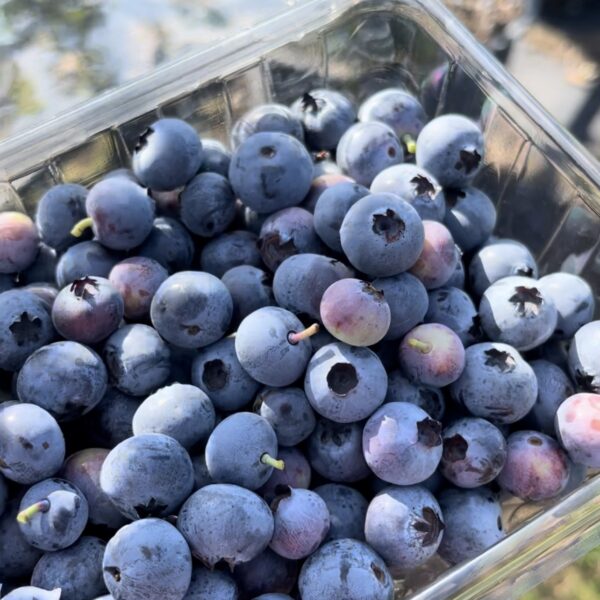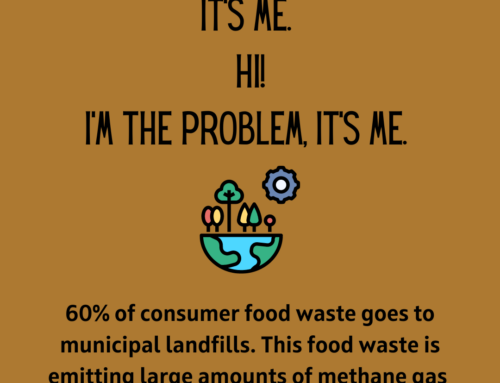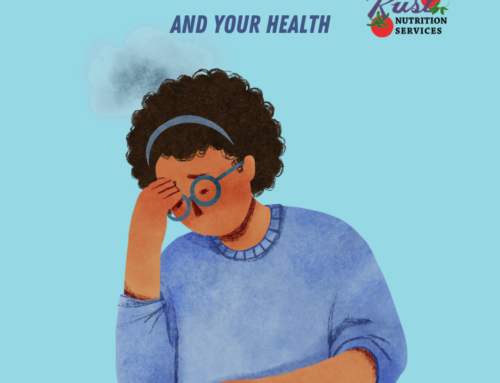Many people say they want to know where their food comes from. I have a request. Every time you open your refrigerator or freezer – think about the farmers, pickers, and processors of your food. Be grateful!
I recently had the opportunity to tour a local blueberry farm and operation, so let me share a few Fun Facts:
- True story: Blueberries are my favorite fruit. The are easy to prep, and delicious to eat (plain, with yogurt or cottage cheese, or on salads) and easy bake with.
- That soft, dusty white coating you find on blueberries is called “bloom.” Bloom is a natural part of the growing process. It provides a defense mechanism helping to protect blueberries from harsh sunlight. Maybe we should call them smartberries!
- At only 80 calories a cup, you can pack in a lot of disease-fighting antioxidants into your day with blueberries. They Vitamin C and Anthocyanin – the blue, red, or purple pigments found in plants. Anthocyanins are powerful antioxidants that may have disease-preventing properties, including lowering blood pressure (say hello DASH Diet planning).
Beyond the Table®
The National Nutrition Month theme for 2024 is “Beyond the Table”. I organized an event for the Suncoast Academy of Nutrition and Dietetics that truly helped us see beyond the table! Wish Farms was kind enough to host our small group of dietitians through their blueberry field, warehouse and packing facility, and offices. See the video.
Wish Farms: Humble Beginnings – From NYC to Plant City Florida
I love a good story, and this company has one.
With this story, I encourage you to consider all of the people who are behind the scenes bringing our food to the table (in the field, on the tractors, on the processing lines, in the offices, and on the road).
It’s a true entrepreneurial timeline of how a small “start-up” at the turn of the 20th century, forged forward to the future and adapted as needed to sustain itself.
The humble beginnings of what is now Wish Farms began when 19-year old Harris Wishnatzki (hence WISH farms) arrived in New York from Kyiv, Ukraine in 1904 (about the same time that my grandparents arrived there from Italy). He began selling fruits and vegetables from a pushcart on the streets in New York. He eventually teamed up with another pushcart peddler, Daniel Nathal, so they could grow their business. The fruit came to New York by railroad, grown in Florida. By 1929, Mr Wishnatski began traveling to Florida during the winter to see the farm production and auction market. By 1937, Florida became his permanent home. Wish Farms remains a family business, and Harris Wishnatski’s great grandson Nick led our tour.
Wishes Come True
Wishes do come true – with a lot of work and planning. Nick’s dad, Gary Wishnatski began working for the company in 1974 and led it through some changes, including adding blueberries to the operations. The company split into two entities in 2001, with Nathal’s taking the wholesale business and Wishnatski taking the Florida operation. In 2010 the company rebranded itself as “Wish Farms” with “Misty the Garden Pixie” as mascot, and by 2014 they decide to focus solely on berries.
It’s always so fascinating to see all of the work, planning, and nonstop activity that goes on to bring our food supply to the supermarket. Time is of the essence. As Nick told us, once picked, “the berries are essentially dying”. They must be handled quickly and properly in order to maintain a longer shelf life. They go from field to the warehouse chillers before they are packaged then shipped to grocers.
Wish Farms now receives berries to package and process from growers all over Florida, as well as a few farms from North Carolina, Chile, Mexico and California.
Less Waste and Sustainability
I’ve visited dozens of farm and livestock operations over the past decade. All multi-generational farms across the US work at sustainability. Otherwise, they wouldn’t still be in operation for the 3rd, 4th or 5th generations. They are always looking for ways to be more sustainable and reduce waste. Wish Farms is not different in their efforts to combat climate change. They are continuously looking for ways to reduce plastic and food waste and adopt other sustainable practices. For instance, they created a secondary market for strawberries, by producing, processing, and selling processed strawberries. These berries are sold for frozen products or other ingredient needs. This helps farmers sell berries and prevent food waste! (Fun fact – strawberries are picked AND packed in the clamshell container you buy, right in the field).
Wish farms headquarters also uses a solar power system that has 2100 panels with an annual output of 1.6 gigiwatts.
New Berry Varieties
You may have already tried the Pineberry. Pineberries were developed through natural breeding techniques at the University of Florida. They have the shape of a strawberry, and have a slightly different flavor profile. Some describe some pineapple or apricot notes.
Zero Waste Reminder
Proper food storage helps keep foods last longer. Place berries in the fridge, then wash when you are ready to eat them. You can also wash, dry, then freeze for up to a year (and use in smoothies, pancakes, or pie).





